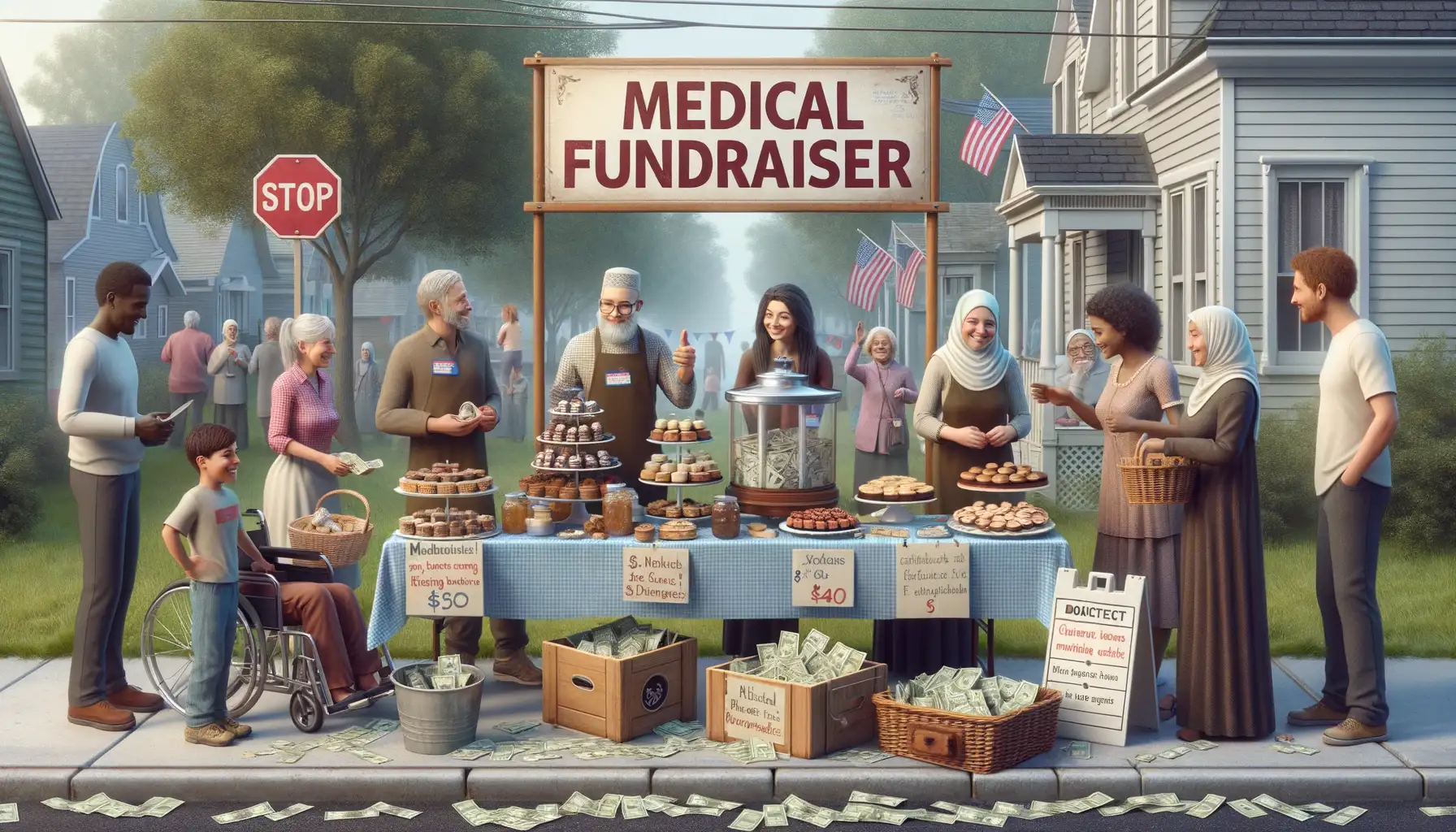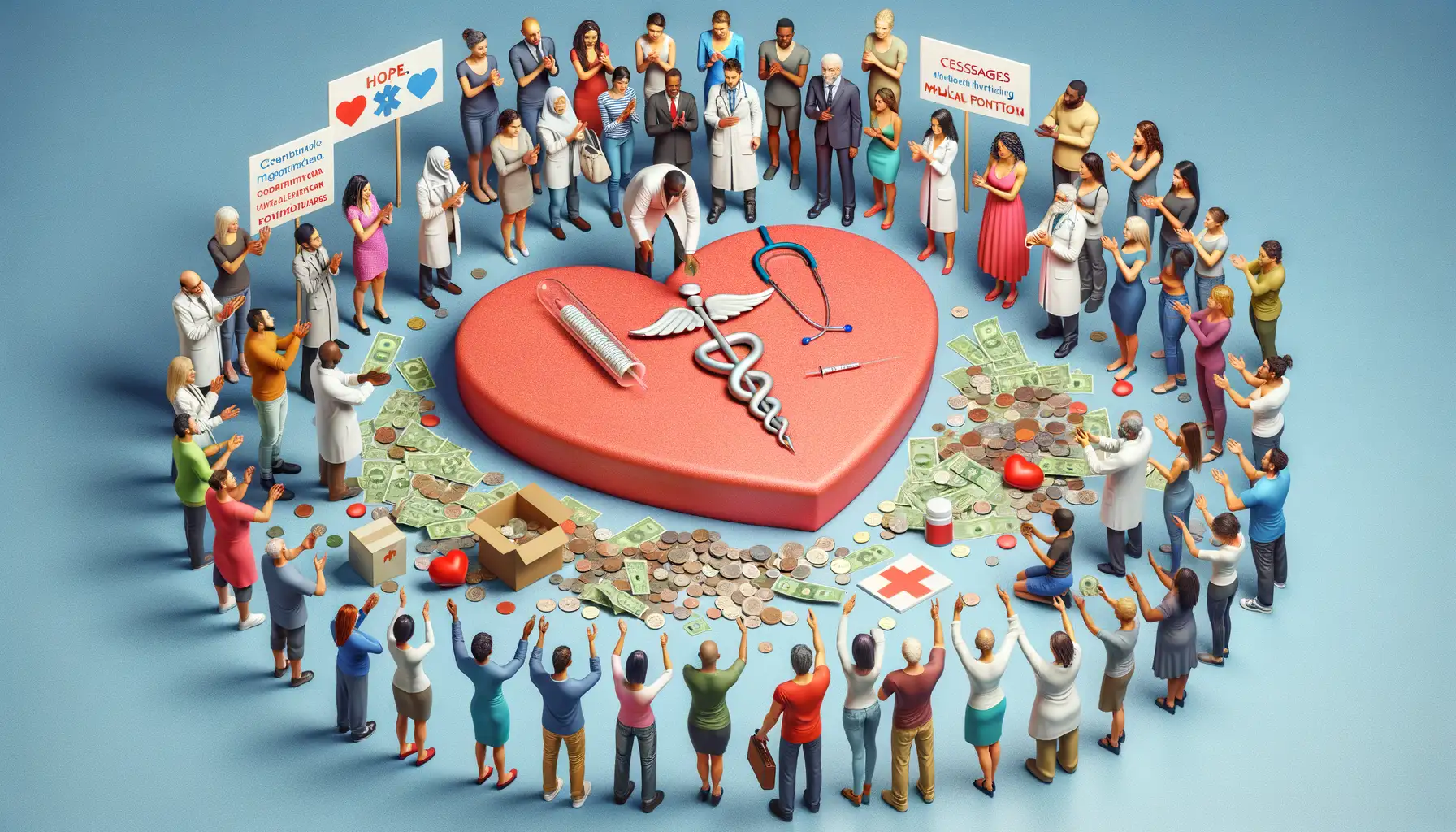The Evolution of Medical Fundraising Over Time
The Humble Beginnings: Bake Sales and Benefit Concerts
Imagine a time when communities rallied around causes with nothing more than homemade pies, handwritten posters, and an old church hall. That’s where it all started—grassroots efforts like bake sales, spaghetti dinners, and benefit concerts. These initiatives relied on human connection, the power of word-of-mouth, and unwavering local support. Your neighbor’s illness wasn’t just their struggle; it united the whole street in a collective effort to help.
Think about those heartfelt donation jars sitting by cash registers, silently calling out for spare change. Or, the charity raffles, where people bought tickets not for the prizes but to show they cared. These were the lifeblood of early medical fundraising. Sure, they were simple, but they were personal—every handshake, every plate of cookies sold, a symbol of hope.
- *Community-focused events*: These brought people physically together, creating a sense of shared purpose.
- *Personal asks*: Families turned to friends and relatives for direct, face-to-face support.
When Media Changed the Game
Then came the 20th-century shift—radio broadcasts and local newspapers championing individual fundraisers. The stories grew louder, reaching ears beyond immediate neighborhoods. Think of this as the era of “megaphones” for medical causes, amplifying voices that once only whispered.
Take telethons, for instance. Who could forget those live TV events that tugged at your heartstrings while celebrities manned donation hotlines? Or public service announcements raising awareness about rare diseases? The reach was unmatched, and suddenly, helping a stranger you’d never met felt not just possible—but urgent.
This era made one thing clear: storytelling could move mountains. And when these stories broadcasted hope, need, and resilience, wallets opened without hesitation.
Traditional Methods of Medical Fundraising

The Heartbeat of Community Efforts
Before the days of smartphones and social media shares, medical fundraising had a deeply personal touch—it thrived on human connection. Imagine a small-town bake sale where neighbors gathered, the scent of freshly baked cookies mingling with warm hugs and supportive smiles. These weren’t just events; they were lifelines for families in need. People didn’t donate because they were asked online; they gave because they saw the face behind the need.
Charity dinners and benefit walks were another cornerstone of traditional fundraising. Local businesses would pitch in with sponsorships, communities would rally behind a common cause, and family friends would organize raffles with tangible prizes—maybe a handmade quilt or a local artist’s painting. It wasn’t just about raising money; it was about creating shared moments of hope.
- Hand-addressed letters tugging heartstrings with stories of perseverance.
- Donation jars brimming with coins at diner counters and church halls.
- Live auctions that turned into laughter-filled gatherings.
These methods weren’t just effective; they were uniquely human. Every dollar raised carried the weight of someone’s love, care, and belief in healing.
The Rise of Digital and Online Fundraising Platforms

The Digital Revolution: A Lifeline for Modern Fundraising
Picture this: you’re scrolling through your phone when a heart-wrenching story pops up in your feed. A family you’ve never met is rallying support for a loved one’s medical bills. In just a few taps, you can make a donation, share their story, and feel like you’ve made a tangible difference—all without leaving your couch. This is the power of online fundraising platforms.
Gone are the days when fundraising meant organizing bake sales or gala dinners (though we still love a good cupcake!). With platforms like GoFundMe, Facebook Fundraisers, and dedicated healthcare crowdfunding sites, anyone can amplify their plea for help to an audience of millions.
- Real-time updates foster transparency and build trust with donors.
- Donations can pour in from across the globe within minutes.
- Emotional, storytelling-driven campaigns inspire action instantly.
Think of these platforms as the new town square—except now, it’s global, digital, and always open. The ripple effect is undeniable: friends tell friends, posts go viral, and communities rally. It’s not just fundraising; it’s hope at the speed of Wi-Fi.
Impact of Crowdfunding on Medical Fundraising

How Crowdfunding Reshaped Hope and Healing
The days of passing around a donation jar or hosting a spaghetti dinner for medical bills feel like a distant memory, don’t they? Enter crowdfunding—where a single click can rally a community across continents. This isn’t just fundraising; it’s a modern lifeline powered by empathy and technology.
Imagine this: a young artist diagnosed with a rare illness shares her story on a crowdfunding platform. Within hours, friends, coworkers, and even strangers contribute not just money but heartfelt messages of encouragement. It’s not about “donors” anymore—it’s about a global family lifting someone up.
Crowdfunding has transformed what was once a private battle into a collective mission. It makes room for:
- Transparency: Share your journey with real-time updates, photos, and videos.
- Speed: Emergency? Funds can flow in days, not months.
- Inspiration: Stories ripple outward, motivating others to act.
This digital revolution doesn’t just gather funds; it gathers hearts. Suddenly, the question is no longer “How will I pay for this?” Instead, it becomes “How do I thank all these people supporting me?”
The Emotional Ripple Effect of Crowdfunding
Beyond the dollars and cents lies something unexpected: the deep human connection crowdfunding creates. Think about Margot, a retired teacher who never met Liam, a toddler needing surgery. Yet, after reading his campaign, she donated her monthly espresso budget to help him. Why? Because she saw herself as part of something meaningful.
Crowdfunding has broken barriers once shaped by geography, time, and anonymity. In its place, we have something richer—a tapestry woven by acts of kindness from across the globe. The result? Not just raised funds, but raised spirits. Isn’t that, in itself, revolutionary?
Future Trends and Innovations in Medical Fundraising

Revolutionizing the Way We Give
The landscape of medical fundraising is shifting faster than ever before, carried by the winds of innovation—and it’s brimming with possibilities. Imagine a world where artificial intelligence could analyze donor behaviors, pinpointing exactly who might feel passionately about supporting a rare disease fund. Yes, this isn’t sci-fi; it’s the near future. AI will help charities craft more personalized campaigns, creating emotional resonance like never before. It’s not just about asking for donations anymore; it’s about telling stories that move hearts.
And then there’s blockchain—this tech isn’t just for cryptos. Transparent donation tracking could become a game changer for trust in fundraising. Picture being able to follow your dollar as it journeys through the system and lands directly in the recipient’s hands. Wouldn’t that bring a new level of confidence to your giving?
- Wearable technology may soon allow donors to contribute based on fitness challenges—turning every step into hope for someone in need.
- Virtual Reality (VR) could give donors an immersive glimpse into the lives they’re impacting, making the cause incredibly tangible.
This isn’t just evolution—it’s a fundraising revolution, and it’s only beginning.
